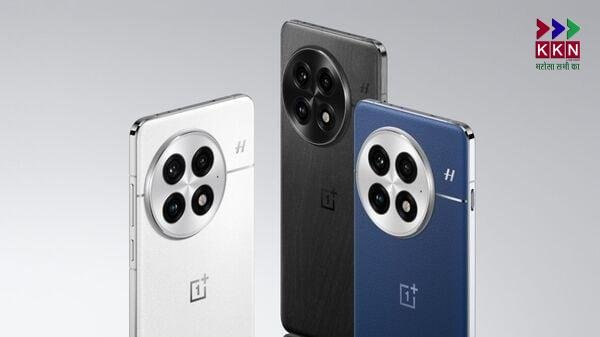
The Redmi Note 14 Pro+ landed in China last September. Attention now shifts to its heir. Reliable tipster Digital Chat Station has revealed core details of the Redmi Note 15 Pro+. Fans and analysts are noting each clue. The handset sits at the heart of Xiaomi’s volume strategy. Early reports promise notable upgrades in power, endurance, and imaging.
Display and Design: 1.5K Panel with Slim Bezels
The Redmi Note 15 Pro+ should carry a “1.5K” screen resolution. That tag points to 2712 × 1220 pixels. The leak suggests almost uniform bezels on all four sides. A flat panel remains likely, keeping production cost balanced. The front glass may still use Corning protection. A centered punch‑hole cutout is expected for symmetry. Xiaomi is said to pursue a metal frame for added rigidity. Edge curvature stays minimal to avoid accidental touches.
Camera System: Dual 50 MP Sensors Lead the Pack
Imaging remains a headline feature on every Redmi Note generation. Rumors list a 50 MP primary sensor once again. The new leak also claims a 50 MP telephoto module. Such parity in resolution could ensure a smooth quality transition between lenses. Xiaomi may stick to pixel‑binning for low‑light clarity. Optical image stabilization is almost certain for the main shooter. The telephoto unit likely offers 2× or 3× optical zoom. An eight‑megapixel ultra‑wide camera may still join the pair.
Power and Performance: Snapdragon 7s Gen 4 at the Core
Processing duty apparently moves to the Snapdragon 7s Gen 4. Qualcomm has yet to unveil this platform. Expect a six‑nanometer or four‑nanometer fabrication. Core layout could mirror the Gen 3, but clock speeds should rise. The previous Redmi Note 14 Pro+ used the Snapdragon 7s Gen 3. That chip delivered balanced mid‑range output. Gen 4 promises higher GPU frequency, helping gaming frame rates. 5G dual‑SIM is baked into the modem as usual.
Battery Life: Massive Pack Sets New Mid‑Range Record
Battery capacity leaks cause the most chatter today. The Redmi Note 15 Pro+ may hide a cell between 7,000 mAh and 8,000 mAh. Such sheer size could destroy endurance anxieties. Xiaomi might employ a stacked battery design to maintain thickness. The firm already shipped 7,000 mAh packs in select overseas models. Fast charging figures remain unknown, yet 120 W support seems plausible. Sustained high current will need upgraded cooling sheets.
Comparison with Redmi Note 14 Pro+: Evolution in Focus
The 14 Pro+ debuted with a 5,000 mAh battery and 1.5K display. It shared a 200 MP primary camera and 12‑MP ultra‑wide lens. The new device trades megapixel count for larger sensor pixels and telephoto reach. Screen resolution stays identical, easing app scaling. Performance jumps via the Gen 4 SoC. The most significant leap appears in battery size. Xiaomi wants day‑long heavy use without power banks.
Market Availability: China First, India Question Mark
Xiaomi usually launches Redmi Notes in China before India. The Note 14 Pro+ never reached Indian shelves under that name. Instead, the firm rebranded or skipped variants. The Note 15 Pro+ may follow a similar approach. An India launch could adopt a POCO badge or await carrier alignment. Regulatory certifications will reveal plans in coming months.
Naming Confusion: Same Label, Different Specs
Xiaomi occasionally sells dissimilar hardware under identical names across regions. The Chinese Note 14 Pro+ differs from the global Note 14 Pro+ in camera count. Enthusiasts must verify model numbers before import. Xiaomi may simplify naming when exporting the Note 15 series. Still, memory options, charging wattage, or color palettes can vary by market.
Software Experience: MIUI Successor on Android 15
By release time, Android 15 should reach stability. Xiaomi is transitioning from MIUI to HyperOS branding. The Redmi Note 15 Pro+ will likely ship with HyperOS 2.0. System fluidity and tighter Google Play integration remain a priority. Battery health management will be critical given the huge cell. Regular security patches could help enterprise acceptance.
Design Language: Balancing Weight and Feel
A battery near 8,000 mAh usually demands thicker shells. Xiaomi engineers need clever internal stacking. A metal frame helps durability while keeping flex minimal. The rear panel might employ matte glass to reduce fingerprints. Color variants should include Midnight Black, Glacier Blue, and Coral Purple. Side fingerprint readers may return unless Xiaomi opts for an under‑display scanner.
Audio, Connectivity, and Extras
Stereo speakers with Dolby Atmos tuning remain probable. An IR blaster, beloved in Asia, will likely stay. Wi‑Fi 6E or even Wi‑Fi 7 could appear, depending on chipset support. Bluetooth 5.4 could bring Auracast features for multi‑device streaming. NFC availability often depends on region. Headphone jacks survived on recent Redmi Notes, yet this model could drop the port to save space.
Xiaomi’s India Struggle: Market Share Slides
Once India’s volume king, Xiaomi now faces heat from Vivo, OPPO, and Samsung. Aggressive offline expansion by rivals eroded Xiaomi’s earlier edge. Delayed product launches hurt excitement in tier‑two cities. Competitors secured financing partnerships with major banks. That move eased higher average selling prices for them. Xiaomi shipments stalled outside e‑commerce flash sales.
Strategic Missteps and Marketing Gaps
Xiaomi pushed many SKU refreshes with minor tweaks. Consumers found model grids confusing. Offline retailers complained about lower margins. Digital marketing campaigns lacked localized cultural references. Vivo and OPPO funded festive roadshows and campus events. Samsung leveraged strong after‑sales reach and corporate tie‑ups.
Financing and Service Gains Rivals an Edge
Customer credit programs grow important in the mid‑range. Vivo Finance and Samsung Finance+ approved instant loans with minimal paperwork. Buyers shifted toward these convenient offers. Xiaomi’s Mi Finance offered virtual cards, but awareness remained low. After‑sales wait times also influenced final purchase decisions.
Will the Redmi Note 15 Pro+ Win Back Fans?
A giant battery and fast chipset sound attractive on paper. Yet hardware alone no longer decides success. Xiaomi must pair the Note 15 Pro+ with thrilling offline demos. Retail training, festival rebates, and easy EMI schemes are vital. Software polish, timely updates, and clean advertising messages enhance trust.
Potential Pricing Strategy
The Note 14 Pro+ launched in China at around CNY 1,999. A direct successor with bigger battery and newer chip could raise costs. Xiaomi may absorb some margin to stay aggressive. An Indian variant, if released, might target ₹25,000 to ₹28,000. Early‑bird coupons could soften the sticker shock.
Environmental and Regulatory Factors
Battery regulations grow stricter worldwide. An 8,000 mAh pack demands rigorous safety tests. Thermal runaway mitigation will influence global approvals. Shipping larger lithium cells costs more due to airline restrictions. Xiaomi could limit the biggest battery variant to local markets initially.
Competition Landscape in 2026
Leaks hint that Realme will unveil the Realme 16 lineup with similar specs. Samsung Galaxy A36 could gain a 6,000 mAh cell and Exynos 1480. Vivo may deploy Zeiss optics in its Y200 series. Xiaomi must offer a compelling story beyond metrics.
Long‑Term Brand Vision
Xiaomi founder Lei Jun wants premium perception parity with Apple. The Redmi line helps maintain scale at lower tiers. The Note 15 Pro+ acts as a halo product in affordable zones. If successful, it can stem market share bleed and rebuild channel confidence.
The Redmi Note 15 Pro+ leak paints an exciting mid‑range upgrade. A Snapdragon 7s Gen 4 chip and an 8,000 mAh battery promise headline endurance. Dual 50 MP cameras aim for consistent focal quality. Yet Xiaomi’s challenges in crucial regions, notably India, loom large. Recapturing momentum will need more than specifications. Retail presence, financing ease, software polish, and clear messaging must converge. The global tech community watches closely. Xiaomi’s next move with the Redmi Note 15 Pro+ could decide its standing in 2026 and beyond.
Share this:
- Click to share on WhatsApp (Opens in new window) WhatsApp
- Click to share on Facebook (Opens in new window) Facebook
- Click to share on Threads (Opens in new window) Threads
- Click to share on Reddit (Opens in new window) Reddit
- Click to share on Telegram (Opens in new window) Telegram
- Click to share on X (Opens in new window) X
- Click to share on LinkedIn (Opens in new window) LinkedIn


